The Zanzibar aloe is also known by its scientific name of Aloe Juvenna. This popular succulent is native to Kenya but is only found in a small area there, along the border with Tanzania, where it grows wildly and prolifically.
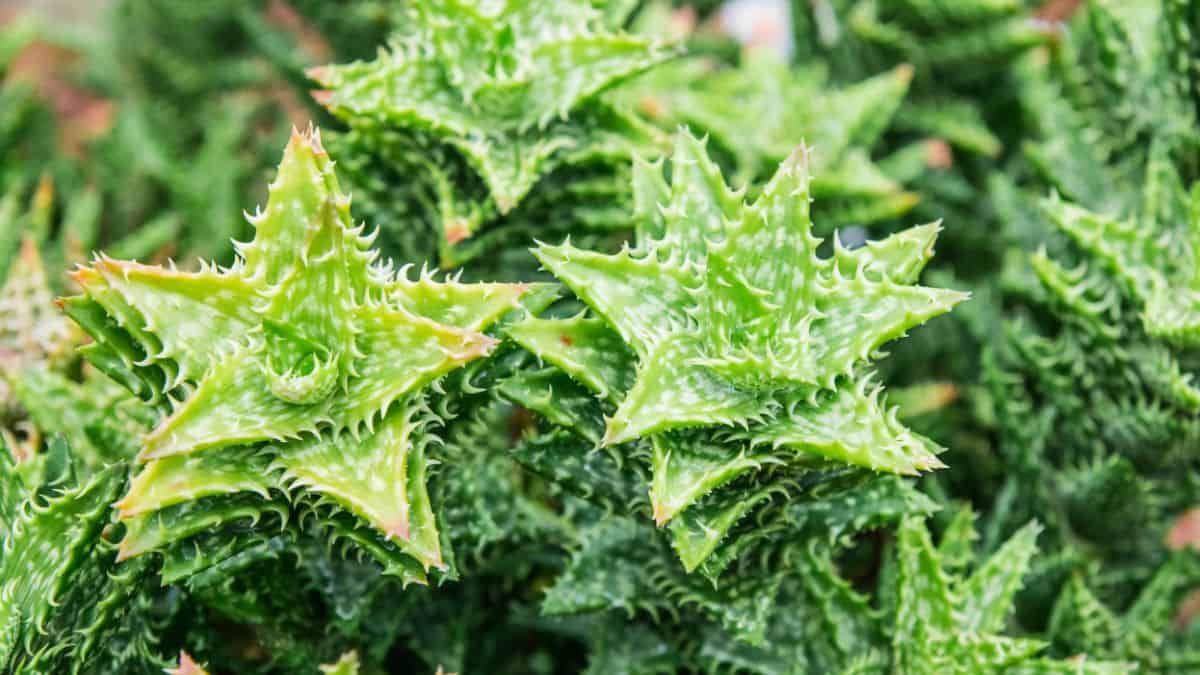
The name Juvenna is actually a misnomer and the result of a labeling error. It was originally labeled as a ‘Juvenile aloe’. This was incorrectly transcribed, and it became known by the name Juvenna. But it is also well-known as the Zanzibar aloe.
Jump to:
Zanzibar Aloe Appearance
| Name: | Aloe Juvenna |
| Soil: | Cactus soil with good drainage |
| Blooming: | Spring, autumn and winter |
| Light: | Direct sunlight, with partial shade |
| Water: | When the soil is completely dry |
| Propagation: | Stem cuttings and offsets |
The Zanzibar aloe is an unusual looking, but strikingly attractive succulent. It has long stems of up to 2 feet, that start out straight but later bend over in an arch.
The stems are covered in long, oval-shaped leaves that taper to a point at each end. They are light green in color and are sometimes splattered with white spots or patches. The tips of the leaves often turn bright red with prolonged exposure to the sun.
The leaves are very densely packed on the stems and form a rosette shape. They are edged with spiky, tooth-like protrusions. These teeth look very sharp but are actually soft to the touch.
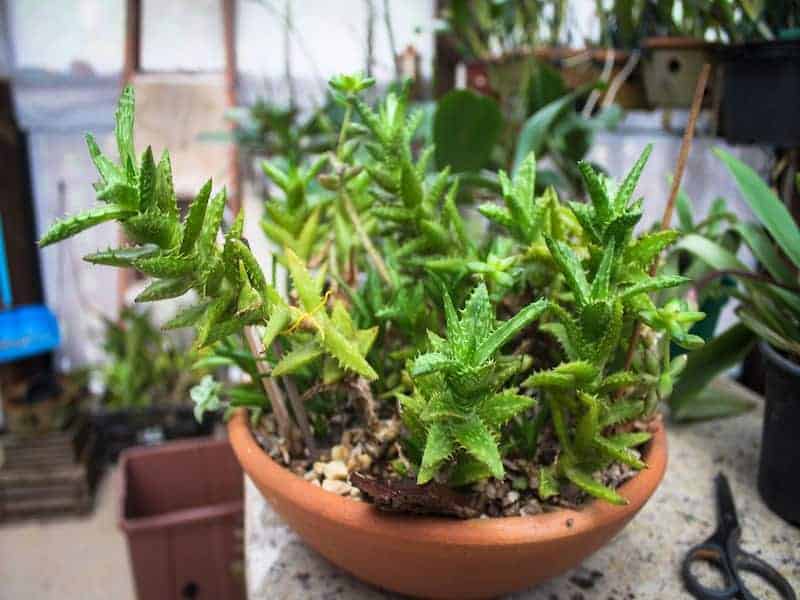
Buy it from:
The rosettes multiply profusely, making a thick ground cover. If the Zanzibar aloe is planted in hanging containers, it will trail down and make a beautiful display.
It flowers intermittently, rather than regularly. The flowers will appear in mid-summer, or even towards the end of summer. The flowers are varying shades of red and orange, with spiky-looking petals. They will grow to a height of about 8 inches.
Caring for the Zanzibar Aloe
The Zanzibar aloe is a fairly simple succulent to cultivate. It does not need much in the way of care or nurturing in order to thrive.
Light
If your Zanzibar aloe is to be planted outdoors, choose a spot that gets plenty of direct sunlight, with partial shade. Although this succulent is used to a hot climate, if it receives too much direct sunlight it may suffer from sunburn. It needs approximately 6 hours of direct sunlight a day.
The Zanzibar aloe is highly suitable to keep as an indoor plant. If you want to keep it indoors, choose a warm room that gets lots of direct natural light. If you are in the northern hemisphere, a south-facing window is the best place for it.
No products found.
If you do not have a room with sufficient natural light, it is still possible to cultivate the Zanzibar aloe indoors, with the help of a grow light. This is an electric light that produces artificial light that mimics natural sunlight, allowing photosynthesis to take place. These are readily available at your local nursery or garden center.
Water
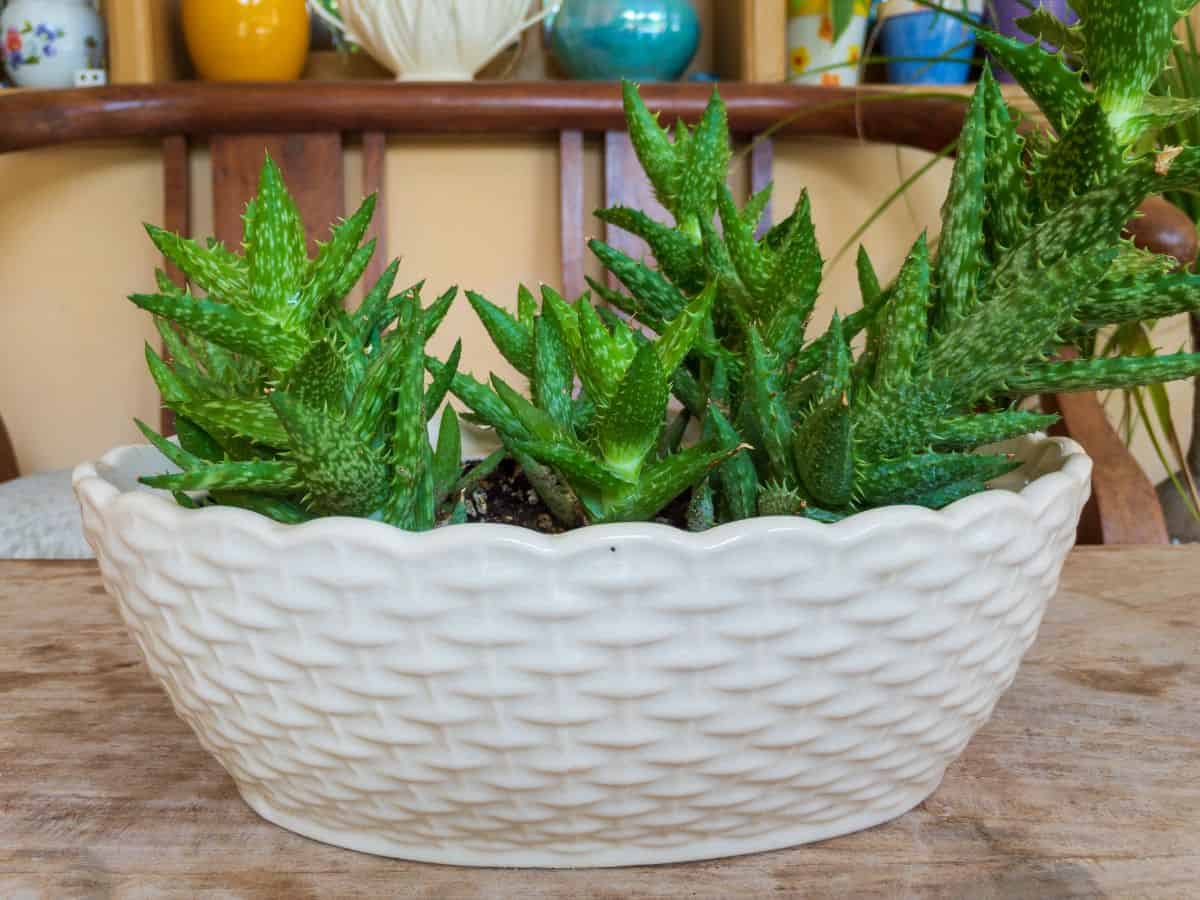
Because the Zanzibar aloe is native to a region with a very arid climate, it does not need much water, and can even survive brief periods of drought.
This succulent is usually dormant during the winter months, while its most active growth period is through spring and summer. Therefore it needs more water during summer when it should be watered about once a week. It only needs to be watered once every 2-3 weeks throughout winter.
When watering your succulent, it is recommended to water thoroughly and deeply, giving the soil a good soaking. Thereafter, the plant should be left to dry out completely before watering again.
If your Zanzibar aloe is growing in a container, it is important to have sufficient drainage holes at the bottom of the container, so that excess water can drain away.
In order to determine when your Zanzibar aloe next needs to be watered, insert your index finger as deep into the soil as possible. It should feel totally dry.
You can also insert a wooden skewer or kebab stick. If it is totally dry when it is removed, your plant needs to be watered again.
Temperature
The Zanzibar aloe loves warmth. It is used to a sub-tropical climate, where the temperature sometimes climbs as high as 95° Fahrenheit.
If you live in a zone with a mild climate, your Zanzibar aloe will be quite happy in an outdoor bed, where it will flourish in the heat and sunshine.
This succulent is not very hardy when it comes to colder weather. It will not be able to survive temperatures below 20° Fahrenheit.
If you live in an area where the winters are extremely cold, it is advisable to cultivate your Zanzibar aloe in containers. In this way, they can be brought indoors when the temperature plummets.
If you keep your Zanzibar aloe indoors, select a warm room that has a constant temperature. It will not do well if it is subjected to extreme changes in temperature. This will cause trauma to the plant and may do severe damage.
Soil
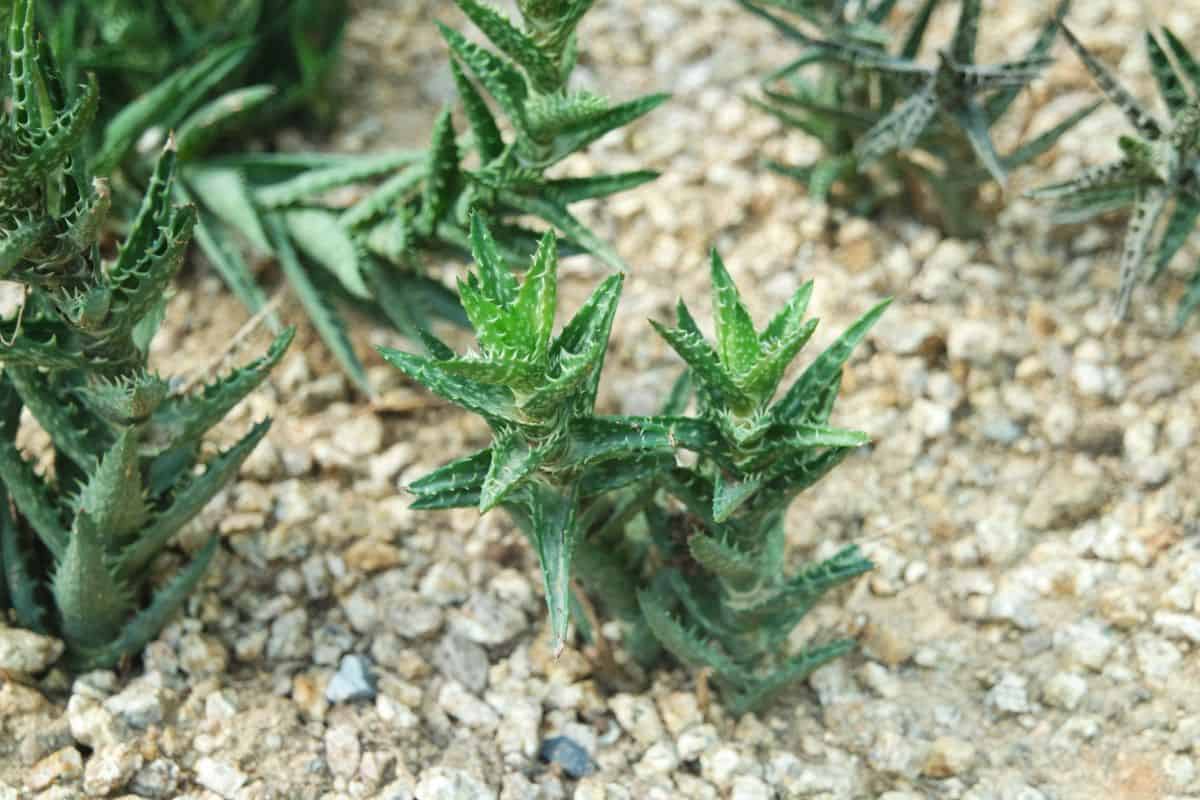
When preparing the soil for your Zanzibar aloe, it is not necessary to worry too much about the pH levels. The most important factor is drainage. It is crucial that the soil should have good drainage.
If the roots are left in soil that is permanently wet or damp, they will start to rot and the plant will eventually die.
The soil should be a mixture of cactus potting soil and mineral grit, in the form of coarse sand, perlite, or pumice. You could even use a combination of all 3 of these elements, in a ratio of one part potting soil to one part mineral grit. This will ensure good drainage.
See Related Article: Elephant Feed Plant Care Guide
Propagating the Zanzibar aloe
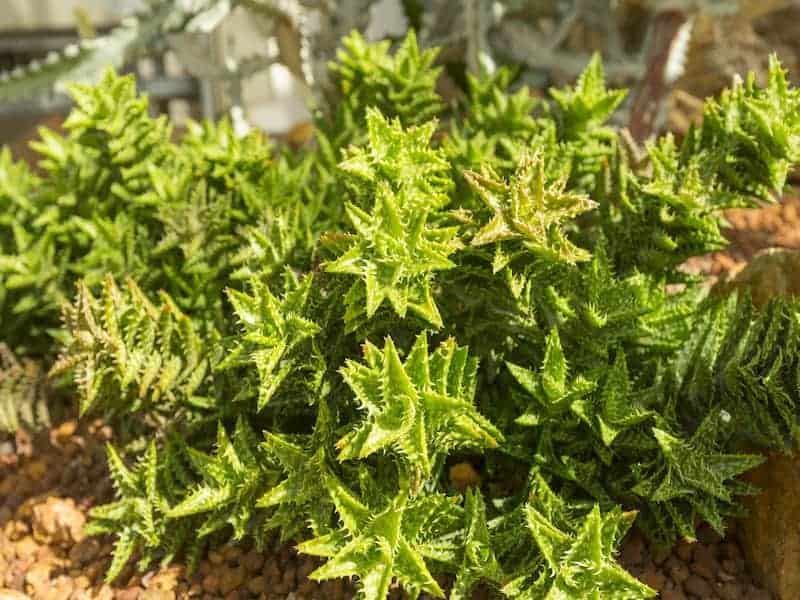
The Zanzibar aloe is easy to propagate, using offsets or cuttings from a healthy plant.
Propagating with offsets
The Zanzibar aloe often produces offsets, as new plants grow around the mother plant. You can cultivate a separate plant by carefully removing one of these offsets and repotting it in a different container.
Using a clean, sharp knife, cut the offset away from the mother plant and remove it from the soil, taking care to remove the roots with the plant. This can be replanted immediately in your prepared pot.
Water lightly every few days until the new plant has taken and is growing well.
Propagating with cuttings
To propagate from a cutting, cut a small piece, as close to the base of the stem as possible. Leave it to dry and callous over for a few days, and plant as above. It should take root and regenerate.
Common Problems and Pests
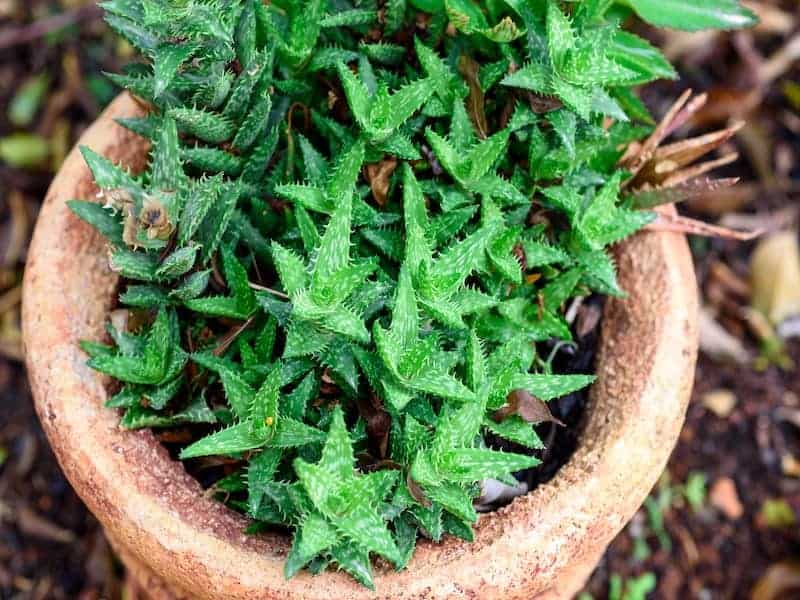
The two most common problems are overwatering, and insects.
Check Also: Tiger (or Shark’s) Jaws Succulent Care Guide
Overwatering
If the leaves of your Zanzibar aloe start to turn brown, and the stems go soft and mushy, your plant has probably been overwatered and the roots are rotting. This can be prevented by following the watering schedule recommended above.
Pests and bugs
The biggest threat to watch out for on your Zanzibar aloe is mealybug. This is a tiny insect that can cause severe damage. If left unchecked, it will multiply rapidly and eventually devour the whole plant.
It is difficult to see the actual insects because they are so small. But the infestation becomes obvious when you notice a fine white coating on the leaves. It looks like a soft web of white filaments.
The insects themselves look like tiny dots. They can be found on the underside of the leaf, in the crevices at the base of the leaf where it attaches to the stem.
The only fool-proof method of eliminating mealybug is with a commercial pesticide, available from a nursery or garden center.


